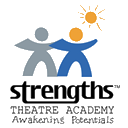Active and Passive Voice Exercises for Strong Communication
The active and passive voices are one of the most significant concepts covered in elementary and high school. Here we have provided active and passive voice exercises to ensure that learners are able to appropriately solve the voice change exercises offered by their teachers.
The exercises below will also help you practice, but they will also ensure that your concepts are clear. The tasks are designed to assess whether students understand the fundamental ideas of active and passive voice. Students are frequently asked questions such as changing their voices or recognizing the type of tense used in sentences.
Active voice:
The subject of the active voice is doing something: the dog is chasing the ball. Take note of how the subject, a dog, performs the activity, chasing, the action’s target, a ball. This is a straightforward, straightforward example of the active voice.
Passive voice:
When a verb acts on the subject of a sentence, it is said to be in the passive voice. The ball (the subject) receives the verb’s action(being tossed) in “The ball was thrown by the pitcher,” as an example of passive voice.
To summarize, the subject of a sentence in the active voice is the person who performs the action specified by the verb. The person or thing who is acted upon or affected by the verb’s action is the topic of the passive voice. The passive voice is usually produced by combining a form of the verb be (such as is, was, or has been) with the verb’s past participle. Although the passive voice is sometimes criticized for being deceptive, it can be effective when someone wants to stress a past event or when the agent of an action is unknown, as is sometimes the case in news reportage.
Active and Passive Voice Examples:
Although active and passive voice seems to be an important grammatical topic for pupils, they need also to be familiar with verbs. Only a learner with a firm grasp of verbs will be able to complete the active and passive voice tasks with ease. Taking classes from the best soft skills coach might help you in getting a good grip on your verb concepts.
Let’s Look At Some Active And Passive Voice Examples:
Visit: voice modulation exercises
Below Are A Few Exercises For You To Identify The Voice:
1. Arijit Singh Sings Beautiful Songs.
2. The Sun Rises In The East
3. The Dog Was Being Beaten By The Children
4. Trilok Was Helped By Dubey’s Uncle
5. The Carpenter Is Building The Door.
6. The Woodpecker Makes A Hole In The Tree.
7. The Man Dropped His Phone In The River.
8. The Bird Was Shot By The Hunter.
9. By Whom Was English Taught To You?
10. Narayan Lost The Money.
Answers: 1. Active, 2. Active, 3. Passive, 4. Passive, 5. Active, 6. Active, 7. Active, 8. Passive, 9. Passive, 10. Active.
Visit: effects of poor communication
In Conclusion:
These are a few active and passive voice exercises that you can practice to gain command over the concept of active and passive voice grammar concepts. It is an important concept to be clear about as these concepts are essential in various professional careers.
As per the analysis, 85% of success in life is ascertained through personality development skills, leadership qualities, and intelligence which define the progressive aspect of your future. Successful leaders are the energy-driven powerhouse behind their organizations. They are the visionaries made to sit in the front seat and take the company towards heights. It may seem to you that gifted lads are the ones with this skill-set but it’s more than that, the truth is most of them are learned and sharpened through time and practice.
Join our personality development course for empowering your personality with strong communication skills!
Originally published at https://sanjeevdatta.com on June 23, 2022.
